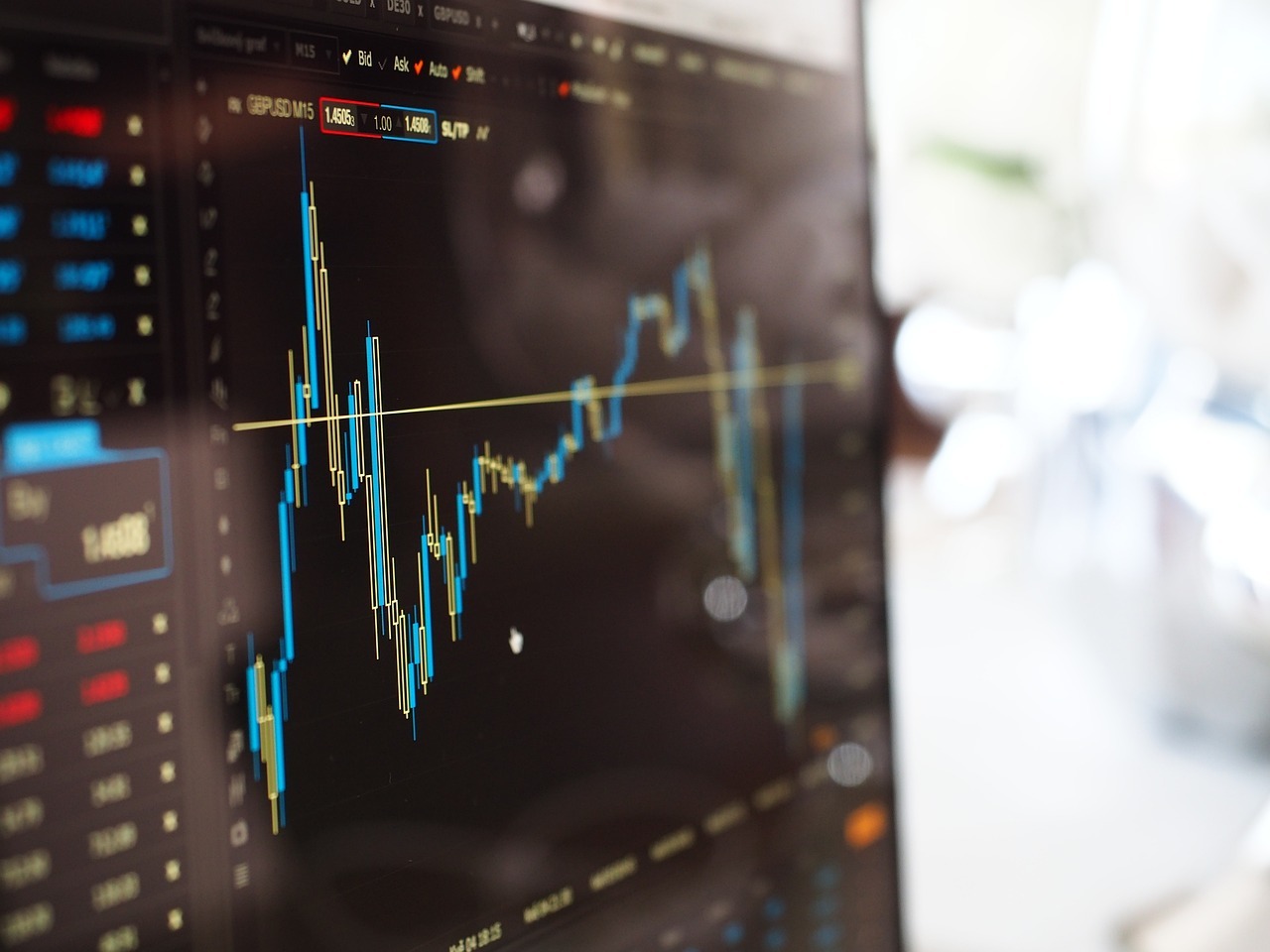Image: Pexels
Introduction
If you have been following personal finance, you must know how two of the approaches: day trading and long-term investment has captured the attention of millions.
The statistics on this starkly illustrate the fact that “on India’s national stock exchange in 2022, the top 11% of the individual traders made profits and an individual on average earned ₹1.5 lakhs, whereas the 89% at the bottom lost about ₹1.1 lakhs on average in that fiscal year. The long-term investors with their holdings of Nifty 50 stocks in their portfolio made an annualised return of 17% for two decades as of 2022.
In this article, while covering day trading and long-term investment approaches, we’ll also analyse how psychological aspects and market conditions can impact them and understand emerging trends to pick the right kind of investment approach that suits your investment traits.
Understanding day trading
Image: Pexels
In India, day trading has taken the most traction. The NSE reported that in 2023, retail investors accounted for a total trading turnover of 45%, up from 33% in 2016.
Day trading involves buying and selling financial instruments within a single day, usually between 9:15 AM and 3:30 PM on the NSE. Traders focus on liquid stocks, among many others like Reliance and TCS, and popular indices such as the Nifty and Bank Nifty.
- Considerations
- There isn’t any minimum balance to start with as such but keeping a corpus of ₹50,000 to ₹1,00,000 will help in risk management.
- Brokerage charges play a role in your profitability. If the charge is ₹20 per trade, the round charge to buy and sell will be 0.4% of your trade value. So you at least need 0.4% to break even.
- There are additional charges like GST and STT which need to be considered for profitability.
- The advantages
- Make quick profits
- Avoid overnight risk
- Leverage short-term opportunities
- Opportunities exist in both rising and falling markets for profits.
- The disadvantages
- Puts you in high stressing environment
- It takes a significant amount of time for constant monitoring
- The risk of losses is potentially high
- With frequent trading comes high transaction cost
“Day trading carries high risk. A 2022 SEBI study revealed that 90% of active retail traders in India incurred losses, highlighting the importance of proper education and risk management.”
Understanding long-term investing
Image: Pexels
When you buy a financial instrument, it is intended to be held for an extended period, which is usually more than a year and can go up to decades. For long-term investing, people in India prefer holding emerging company stocks listed on the NSE and BSE or investing in the most popular instrument mutual funds or exchange-traded funds.
- long-term investment considerations
- You can start an SIP in the mutual fund for as little as ₹500 per month and make direct investments in stocks with a minimum capital of ₹10,000 to ₹20,000.
- You may incur annual demat charges for holding stock or otherwise, with an expense ratio in the case of mutual funds.
- Tax is applicable on long-term investments up to 10% if held for more than a year.
- The advantages of long-term investment
- Wealth accumulation takes place over time.
- Leverage the benefits of compound interest
- Reduced stress level compared to trading
- Earn dividends and capital appreciation from good stocks
- The disadvantages of long-term investment
- In some periods, the returns may not beat inflation
- This approach needs patience and discipline
- You may need to take advantage of short-term opportunities
“Investing, while generally considered less risky than day trading, still carries risks. The Sensex has given annualized returns of about 18% over the last 21 years as of 2022, but individual years can see significant fluctuations. Understanding the risk tolerance of an individual is crucial to invest accordingly.”
Comparison: Day Trading vs long-term investment
| Aspect | Day Trading | Long-Term Investing |
| Time frame | Intraday | Years to decades |
| Risk level | Higher | Lower |
| Time commitment | High | Low |
| Analysis type | Technical | Fundamental |
| Transaction frequency | Multiple daily | Infrequent |
| Capital needs | Higher | Lower to start |
| Profit consistency | Variable | More stable over time |
| Stress level | High | Lower |
| Main focus | Price movements | Company growth, dividends |
| Typical instruments | Liquid stocks and indices | Diverse portfolios, mutual funds |
Psychological aspects in trading vs long-term investment
The motive of day trading is different from long-term investment. It must be distinct to understand psychology while being invested in such approaches.
Day trading is short-lived and needs to be closed at a determined time, while long-term investment is long-lived and has no determined exit.
Now suppose you have reliance stock in hand and it dipped at 2% in a day due to some news. So what’s the psychological behaviour of day traders and long-term investors?
Trader: You must exit at a safe stop loss when the trend reverses against your speculation. Even if it returns later. Logically, it’s unpredictable to decide the direction and holding a position is risky. There can be a 50% chance of either of the two events: be it falling or rising.
If it rises, you might be glad to see that, but there was a 50% chance of it happening, and luckily it did, and you lost nothing. But if it fell, holding a losing position would cost you more money than the stop loss predetermined by you.
Therefore, taking a stop loss of 100 is still better than 500, 1000, or, in fact, capital loss in the worst-case scenario. It indicates that stopping losing is a must while you take risks.
Long-term investor: shouldn’t bother with stock for short-term fluctuations when the idea is to hold longer. This means these fluctuations shouldn’t matter at all.
Traders must have:
- They must be able to manage greed and fear correctly.
- Must be highly focused to make a quality decision
- Don’t get swayed by the noise; rather, stick to the initial plan.
Investors must have:
- Being patient during market stress
- Not having excessive optimism
- Sticking to a long-term plan
- Avoid timing market
Market conditions: day trading vs long-term investor
The buying and selling decisions of a trader or an investor can also depend on the state of the financial market at any given point in time. The condition can be reflected in the directions of the trend, from volatility to economic indicators, global news impact to changes in regulations.
It is certainly important to understand the condition of the market before making any sort of buy or sell decision.
Traders need to assess:
- Short-term movements in price
- Liquidity, trade volume, and volatility
- Breaking news and events
- Technical indicators
- Sector rotation
Investors need to assess:
- The overall trend of the market
- GDP, interest rates, and inflation
- Fundamentals of the company
- Outlook of a sector and industry
- Disruptions in technology
- Changes in long-term policies
All these matters become important for an individual implementing their respective approach.
Emerging trends
With the breakthrough of new technologies, here are some new trends in the domain that’s coming up:
- Quant funds demand may surge
The type of fund where it is entirely managed by the AI algorithms has projected great returns and its demand may surge as we meet the refined AI algorithms.
- Development of NextGen robo advisors
The platforms under construction, built using AI, are poised to predict the best investing strategies per situation and come up with new trading strategies in just a millionth of a second.
- UPI for the secondary market
Now SEBI wants to enable direct transactions with the client by blocking funds for investment in the bank account itself. Thus removing the need to transfer money in a broker account to make a purchase, which means the transaction takes place over an approval from CCL and settlements take place directly to the bank account in T+1 day.
This is in the beta stage and will soon be launched in the application.
Post-pandemic market dynamics
Let’s take an instance of the economic crisis to analyze the stock market conditions during the post-pandemic situation and how traders and investors could experience the market.
Traders view:
Market volatility
The crisis of the pandemic instilled fear and it was unpredictable to guess the economic situation. In the pre-pandemic zone, the sharp drop followed rapid recoveries. The VIX index, which measures volatility, stood elevated compared to the pre-pandemic level.
For a trader, it was both an opportunity and a risk at the same time. Where they could benefit from both falling and rising markets.
Sector rotation
While all the stocks were low, as the economy began to recover, the shift in the sector kept changing cyclically.
Stocks like Zoom went up to $568 in October 2020 but by early 2022 they dropped to $100. REITs that were focused on office spaces went down until normalization.
It’s important to adapt to sectors based on the conditions.
The influence of retail traders
Mostly due to free time, the participation of new entry retailers surged dramatically and it remained on a few popular broking platforms post-pandemic as well.
For a few companies, like GameStop, AMC, Netflix, and many others, the impact of retailers was significant.
It’s also crucial to understand people’s interests periodically to stay abreast.
Government stimulus
The changes in government policies during the pandemic were significant.
Traders had to keep a close eye on the central bank’s policies, government spending, and inflation.
These parameters can impact the sentiment of the market and the asset’s price.
Investors view:
Recovery and growth
The huge drop in the travel and hospitality sectors was seen during the pandemic but during the normalcy stage, these stocks recovered strongly.
Since investors’ views are for long-term holding, those who invested in strong growth stocks shouldn’t fear the short-term fluctuations in the market and should continue to be persistent.
The shift in consumer behaviour
The consumer changes slowly shift during this time. The shift in increased ecommerce shopping, and the trend of remote work.
This is a hint that the changes are trendsetters that will make an impact and investing in such sectors that are leveraging the opportunity has potential for growth.
For instance, the technology and retail sectors have the potential to grow in this case.
Adopting technologies
The adoption of technology was raised during COVID.
So companies into cloud computing and cybersecurity had demand and it continues to have so.
Therefore, the potential of technology stocks in this aspect has a long-term future as well.
Inflation hedge
The concern with long-term investing was finding an investment opportunity that hedged against inflation.
The inflation during that time peaked due to disruptions in the supply chain, shortages of labour, and monetary policy expansion.
So your investment in such a sustained inflationary situation should give you a hedge.
Environmental social governance importance
The awareness of these factors heightened during the pandemic among consumers.
The question was how well are corporations involved in sustainability and social responsibility aspects.
Investors now think of these aspects of the company before investing.
Geopolitical shifts
An event like a pandemic can alter the global supply chain and international relations.
The investor has to track the change in global trade patterns and the changing alliances in their investment decisions for their respective holdings of stocks.
Choosing the right strategy for you
The goal for an individual is to decide what type of approach suits their needs. At the same time, understanding the psychological aspects and market conditions will help you decide what type of investor you’d like to be.
The goal always comes along with time and the way to achieve it will come with some degree of risk. You must decide the risk you are willing to take on any approach you decide.
Some might prefer day trading, and the rest prefer long-term investing; some prefer both.
We’ve seen how two approaches look at the market and specifically understand it with an example of a real crisis.
So what do you think is the best approach for you? Have you been doing either or both of them and how has it been for you so far? Let us know your opinion in the comments.












